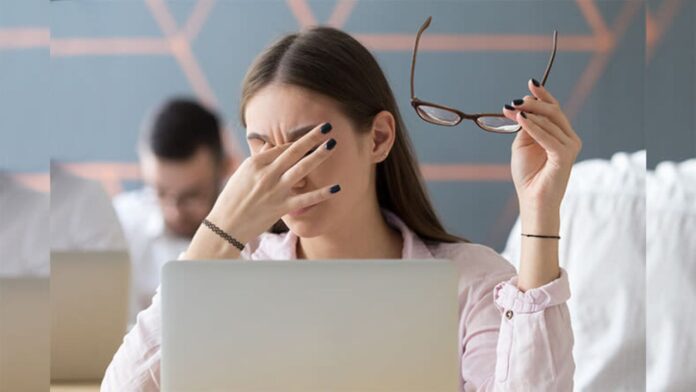In our contemporary, fast-paced society, screens have seamlessly become an integral part of our daily routines. Whether we’re working on computers, scrolling through social media on smartphones, or enjoying our favorite shows on tablets, the time spent in front of screens has significantly increased. However, this heightened screen exposure has given rise to a growing concern – digital eye strain.
Digital eye strain, also known as computer vision syndrome, encompasses various eye and vision-related issues resulting from prolonged use of digital devices. These issues may include headaches, eyestrain, blurred vision, and dry eyes. As our dependence on screens continues to grow, it becomes crucial to adopt strategies to manage and minimize the impact of digital eye strain on our overall well-being.
Here are some tips to manage the impact of screen time:
- The 20-20-20 Rule: Ensure your screen is at eye level, about an arm’s length away, and sit in a comfortable, well-supported chair when working on a desktop. Prolonged screen exposure without breaks is a significant contributor to digital eye strain. Adopt the 20-20-20 rule: take a 20-second break every 20 minutes of screen usage and look at something 20 feet away. Incorporating this simple habit into your routine reduces eye strain and keeps your eyes refreshed. You can set timers or use apps to remind you to take regular breaks.
- Adjusting Brightness: The brightness of your screens plays a crucial role in eye comfort. Adjust your device brightness to match your surroundings, avoiding both excessive and low brightness that can strain your eyes. Consider using dark or night mode in the evenings to decrease exposure to blue light, which has been associated with disrupted sleep patterns.
- Blinking and Eye Moisture: Blinking is often overlooked but is crucial for maintaining eye moisture. Extended screen time can reduce blinking frequency, leading to dry and irritated eyes. Make a conscious effort to blink regularly to keep your eyes lubricated.
- Screen Quality Matters: Invest in high-resolution screens with anti-glare technology to minimize eye strain. Anti-glare filters can be added to existing screens to reduce reflections and glare. Regular eye check-ups are essential to promptly address any underlying vision problems.
By incorporating these tips into your routine, you can effectively manage and reduce the impact of digital eye strain, promoting overall eye health and well-being.

 हिंदी
हिंदी






